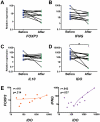Regulatory T cells in the pathogenesis and healing of chronic human dermal leishmaniasis caused by Leishmania (Viannia) species
- PMID: 22545172
- PMCID: PMC3335885
- DOI: 10.1371/journal.pntd.0001627
Regulatory T cells in the pathogenesis and healing of chronic human dermal leishmaniasis caused by Leishmania (Viannia) species
Abstract
Background: The inflammatory response is prominent in the pathogenesis of dermal leishmaniasis. We hypothesized that regulatory T cells (Tregs) may be diminished in chronic dermal leishmaniasis (CDL) and contribute to healing during treatment.
Methodology/principal findings: The frequency and functional capacity of Tregs were evaluated at diagnosis and following treatment of CDL patients having lesions of ≥6 months duration and asymptomatically infected residents of endemic foci. The frequency of CD4(+)CD25(hi) cells expressing Foxp3 or GITR or lacking expression of CD127 in peripheral blood was determined by flow cytometry. The capacity of CD4(+)CD25(+) cells to inhibit Leishmania-specific responses was determined by co-culture with effector CD4(+)CD25(-) cells. The expression of FOXP3, IFNG, IL10 and IDO was determined in lesion and leishmanin skin test site biopsies by qRT-PCR. Although CDL patients presented higher frequency of CD4(+)CD25(hi)Foxp3(+) cells in peripheral blood and higher expression of FOXP3 at leishmanin skin test sites, their CD4(+)CD25(+) cells were significantly less capable of suppressing antigen specific-IFN-γ secretion by effector cells compared with asymptomatically infected individuals. At the end of treatment, both the frequency of CD4(+)CD25(hi)CD127(-) cells and their capacity to inhibit proliferation and IFN-γ secretion increased and coincided with healing of cutaneous lesions. IDO was downregulated during healing of lesions and its expression was positively correlated with IFNG but not FOXP3.
Conclusions/significance: The disparity between CD25(hi)Foxp3(+) CD4 T cell frequency in peripheral blood, Foxp3 expression at the site of cutaneous responses to leishmanin, and suppressive capacity provides evidence of impaired Treg function in the pathogenesis of CDL. Moreover, the concurrence of increased Leishmania-specific suppressive capacity with induction of a CD25(hi)CD127(-) subset of CD4 T cells during healing supports the participation of Tregs in the resolution of chronic dermal lesions. Treg subsets may therefore be relevant in designing immunotherapeutic strategies for recalcitrant dermal leishmaniasis caused by Leishmania (Viannia) species.
Conflict of interest statement
The authors have declared that no competing interests exist.
Figures






References
-
- Murray HW, Berman JD, Davies CR, Saravia NG. Advances in leishmaniasis. Lancet. 2005;366:1561–1577. - PubMed
-
- Saravia NG, Valderrama L, Labrada M, Holguín AF, Navas C, et al. The relationship of Leishmania braziliensis subspecies and immune response to disease expression in New World leishmaniasis. J Infect Dis. 1989;159:725–735. - PubMed
-
- Carvalho EM, Johnson WD, Barreto E, Marsden PD, Costa JL, et al. Cell mediated immunity in American cutaneous and mucosal leishmaniasis. J Immunol. 1985;135:4144–4148. - PubMed
Publication types
MeSH terms
Substances
Grants and funding
LinkOut - more resources
Full Text Sources
Research Materials

